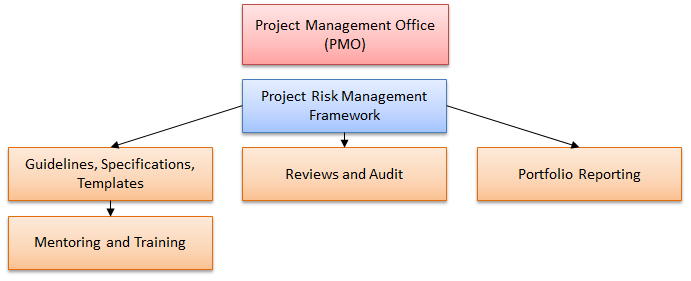In a perfect world, projects would be like an isolated island untouched by outside forces and constraints, but unfortunately this isn’t the case. Projects inhabit an environment that is characterized by many constraints and risks. In larger organizations, a specific project is just one of many that are being planned or executed at any one time, the project portfolio. These projects share common risks and uncertainties due to constraints and objectives of the larger organization in which they exist. Within this environment, the Project Management Office (PMO) provides risk management governance over the project portfolio to ensure that risks are managed consistently and aligns with the organizations objectives.

Consistency is important to ensure that same processes and criteria are used when generating information used in the decision making process. If there is no consistency, it is difficult to compare project performance in the portfolio and allows personal biases to affect the analysis. PMO’s ensure consistent risk management practices first by developing and distributing guidelines and specifications, templates, and training as necessary. These guidelines outline the standard organization risk management processes for identification, assessment, planning, monitoring, and controlling risks. The guidelines will often come accompanied by templates or sample workbooks that provide standardized documentation to support the risk management process, including planning documents, assessment matrixes, and sample reports.
Along the same lines, the PMO can support the processes by providing training and mentoring to project team members. In fact, training and mentoring is just as important as providing the risk management framework (processes etc.) as this will ensure team members understand their roles in the process and how to perform them successfully. Without the training and mentoring, guidelines and specifications will suffer the same fate as most copies of Tolstoy’s War and Peace. It is often featured prominently on bookshelves, but on closer inspection it becomes clear that book has rarely if ever been opened. Training bridges the gap between theory and practice and ensures that all projects know how to perform the required steps in the risk management process.
Finally, PMOs provide a portfolio risk management capability where the assessments of the project risks are rolled up at the portfolio level. This rolling up allows companies to identify common risks across their projects that can be managed most effectively at the organization level. This centralization of the risk management the PMO is able to provide a portfolio risk reporting capability for various organization stakeholders.
To conclude in organizations with a portfolio of projects, PMO’s can provide an important role in overseeing the implementation of standardized project portfolio risk management process that includes providing a process framework, mentoring and training, a portfolio reporting capability.




